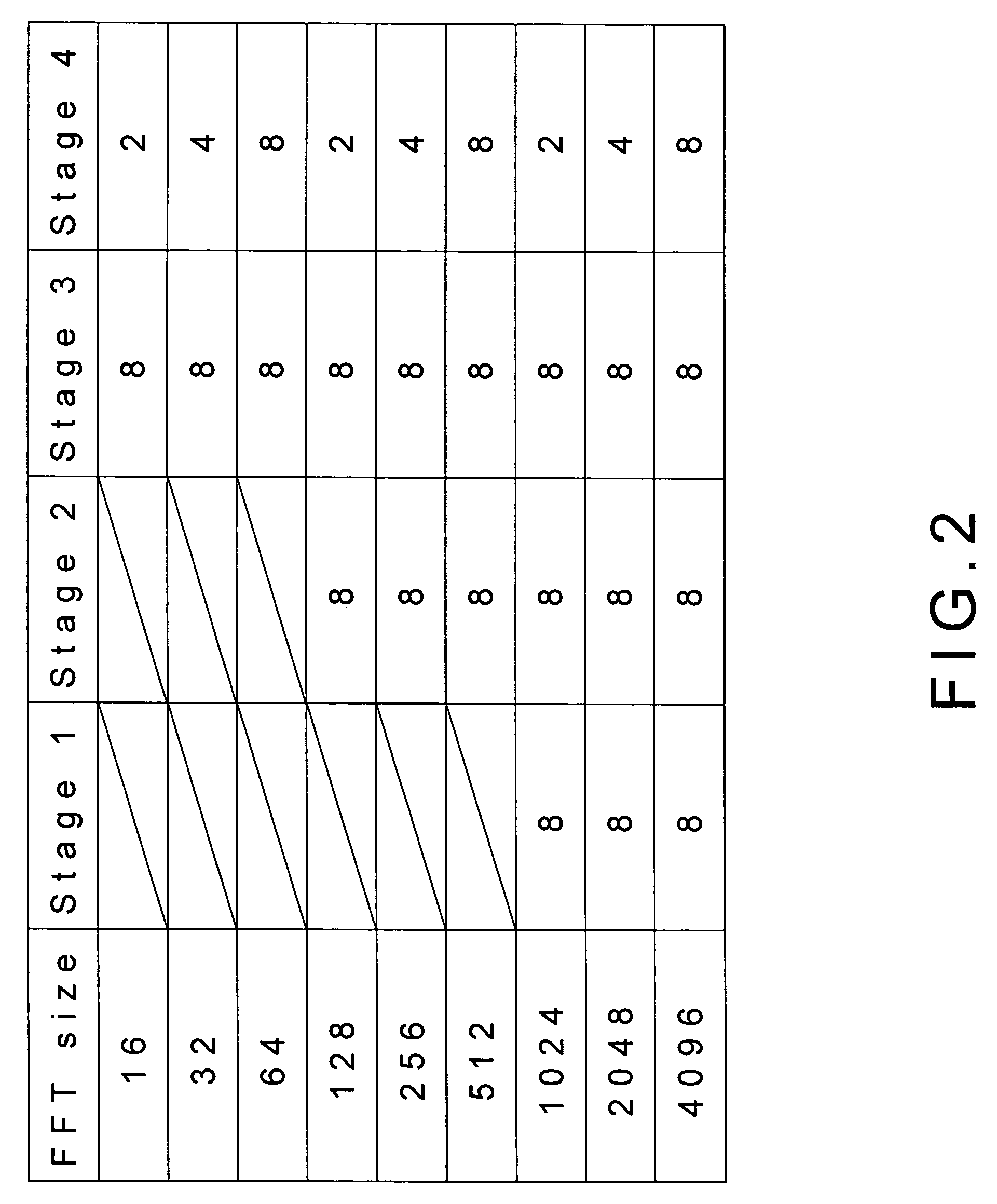Pipeline-based reconfigurable mixed-radix FFT processor
a processor and mixed-radix technology, applied in the field of processors, can solve the problems of long computation time and excessive hardware cost, only achieving 50% of the utilization rate of butterfly elements, and a large amount of computation time and hardware cost, so as to save computing time and hardware cos
- Summary
- Abstract
- Description
- Claims
- Application Information
AI Technical Summary
Benefits of technology
Problems solved by technology
Method used
Image
Examples
Embodiment Construction
[0043]The following description of the preferred embodiment is provided to understand the features and the structures of the present invention.
[0044]Please refer to FIG. 1 to FIG. 15 which, according to a preferred embodiment of the present invention, are a structural view and a block diagram of the preferred embodiment; views showing a block diagram of a 128-point fast Fourier transform (FFT) and a required number of storage elements for various N-point FFT; a view showing the circuit diagram of multiplication by 1 / √{square root over (2)}; views showing block diagrams of a general radix-8 butterfly and a reconfigurable butterfly; a view showing a relationship between control signals and the reconfigurable butterfly; views showing block diagrams of a two-input register and an RB_64 with various capacity; views showing data flows of an register bank for 16-word mode and 128-word mode; a view showing control zones of the register bank; and a view showing a block diagram of a reconfigu...
PUM
 Login to View More
Login to View More Abstract
Description
Claims
Application Information
 Login to View More
Login to View More - R&D
- Intellectual Property
- Life Sciences
- Materials
- Tech Scout
- Unparalleled Data Quality
- Higher Quality Content
- 60% Fewer Hallucinations
Browse by: Latest US Patents, China's latest patents, Technical Efficacy Thesaurus, Application Domain, Technology Topic, Popular Technical Reports.
© 2025 PatSnap. All rights reserved.Legal|Privacy policy|Modern Slavery Act Transparency Statement|Sitemap|About US| Contact US: help@patsnap.com



